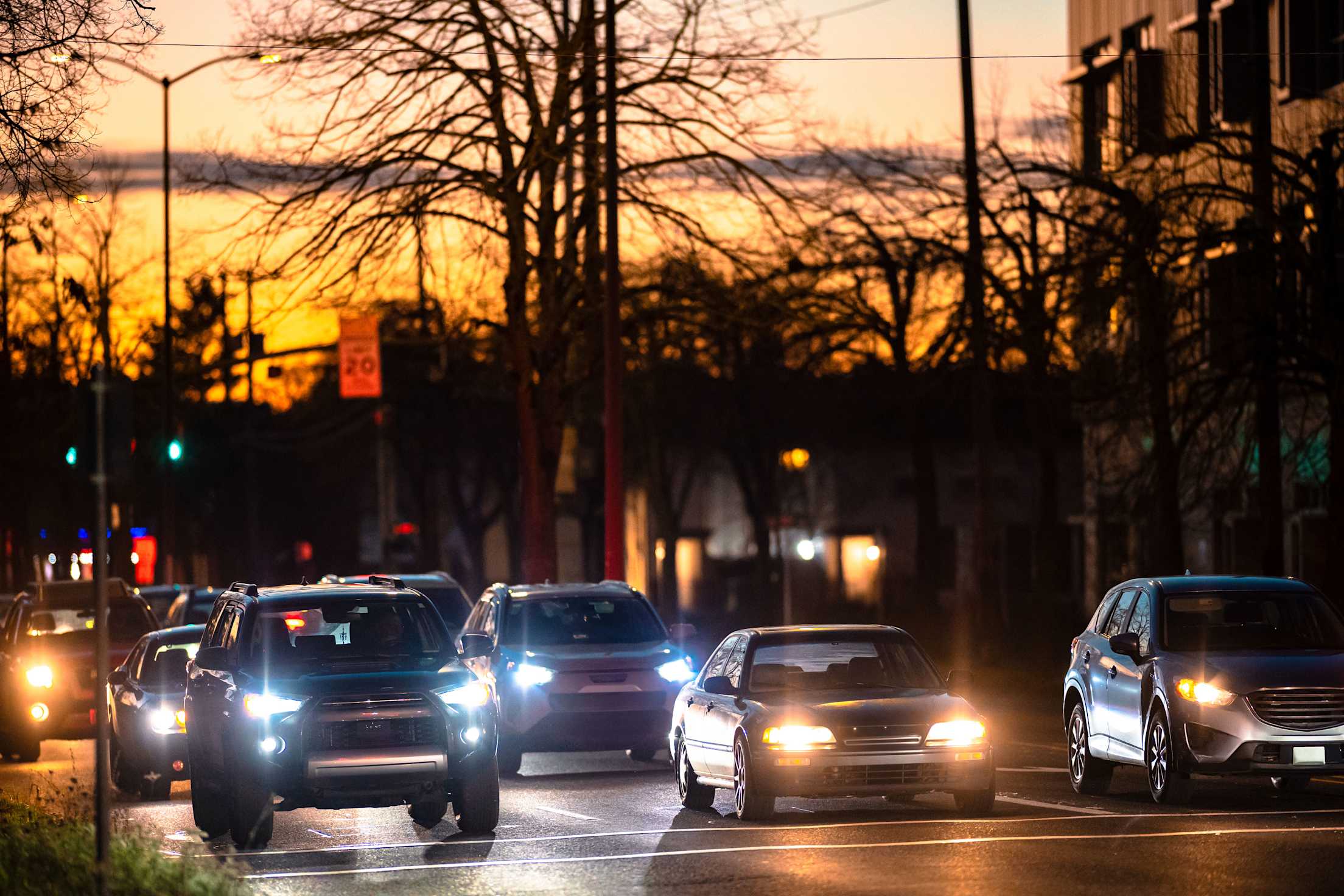
Why Do Headlights Seem So Bright?
Headlights are in fact brighter these days. Here’s what you can do about it.

As the sun goes down, driving risks go up. About half of traffic deaths happen in the dark, at dawn, or at dusk, according to the Insurance Institute for Highway Safety. Headlights obviously play a key role in keeping both drivers and pedestrians safe.
But for several years now, we’ve received a steady stream of complaints from AAA Members about headlights that are simply too bright. While modern headlights can indeed improve road visibility for the drivers who have them, they can at the same time impair it for others.
AAA Members aren’t the only ones who have a problem with these brighter lights. U.S. Rep. Marie Gluesenkamp Perez, D-Wash., has called for federal regulations to dim bright headlights. A Change.org petition to ban “blinding headlights” has garnered over 72,000 signatures.
If bright lights are vexing you, it can help to understand why they’re so bright in the first place.
Brighter Lights, Taller Vehicles
Two factors in particular have combined to make headlight glare worse than it once was.
Bulbs
The most important factor has been the shift from halogen bulbs to those that use LEDs (light-emitting diodes). Most new cars now use the latter. In lumens (the metric for visible light), LED lights can be much brighter than their halogen counterparts.
LED bulbs also produce a bluer light than halogens. That color temperature can make LEDs harder on the eyes than traditional headlights, which have a yellow hue.
“It’s not necessary for headlights to be that color, it’s a design choice,” says Greg Brannon, director of automotive engineering at AAA Inc. “We’re doing research to understand its implications. Could headlights be just as effective, but with a color that people are more comfortable seeing?”
LED bulbs have also enabled more targeted beam patterns, which aim the light more accurately onto the road. But if those headlights aren’t aligned correctly, their beams can drift instead into the eyes of oncoming drivers.
Vehicle Height
Drivers are buying bigger and taller vehicles. Of the 10 most popular vehicles in 2024 (ranked by sales), seven of them were trucks and SUVs, according to data from car-shopping guide Edmunds. That increased height means that the headlights may point more directly into the eyes of drivers in smaller vehicles.

Impact of Bright Lights
While many people complain about these brighter lights, others—particularly drivers whose vehicles are equipped with modern bulbs—love them. They can see the road better, which helps to reduce the risk of accidents for everyone.
“We know that the old-style halogen reflector headlights did not provide enough forward lighting,” says Brannon. “Above 45 miles an hour, you could outdrive your lights.”
LED headlights might help drivers who use them, but it can be a different story for oncoming and trailing traffic.
“We know that these older systems were inadequate,” says Brannon. “The challenge is balancing the performance of modern headlights with the glare for other drivers.”
What to Do About Brighter Lights
If your vehicle is equipped with these brighter lights, make sure that you get them properly adjusted as part of your regularly scheduled maintenance.
Also, avoid buying aftermarket LED headlights, which can have higher brightness levels and may, in fact, be illegal.
What can you do if you’re on the receiving end of these lights?
“Our driver-training folks will tell you that, number one, don’t look into the headlights,” says Brannon. “There’s something called the moth effect: Bright lights naturally draw your eye.” Instead, you should train yourself to look away from the beams and, instead, to keep your focus on the right shoulder of the road.
Additionally, regularly cleaning your windshield to remove dirt and debris can help mitigate the glare of oncoming lights.
The Future of Headlights
Some car manufacturers offer high-beam assist (HBA) as a feature in newer vehicles in the U.S. HBA helps the vehicle automatically toggle between low beams and high beams.
But many other countries have an even better solution: adaptive driving beam headlights. These lights are more robust than HBA, as they continuously change patterns to maintain visibility and reduce glare for other drivers.
Unfortunately, this technology isn’t yet widely available in the U.S. Despite a 2022 ruling from the National Highway Traffic Safety Administration that allowed adaptive driving beam headlights, compliance challenges have made it difficult for automakers to implement them.
The best drivers can do in the meantime is to avert their eyes when bright lights approach and to keep their windshields clean. It can also help to remember that, overall, such lights can actually make roads safer.
Keep rolling with AAA Auto Services, from routine maintenance to emergency roadside assistance.